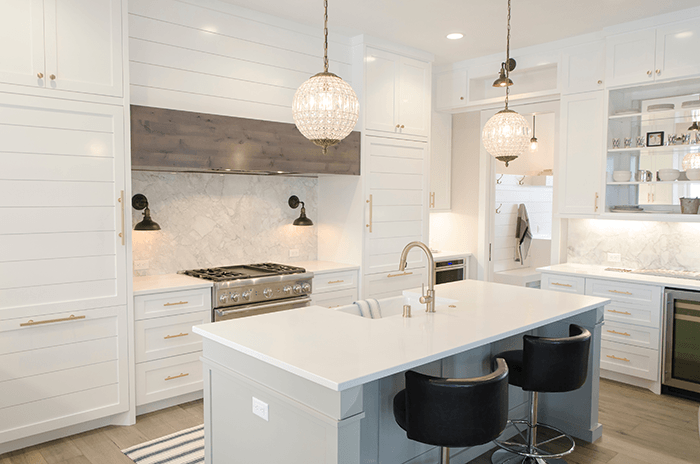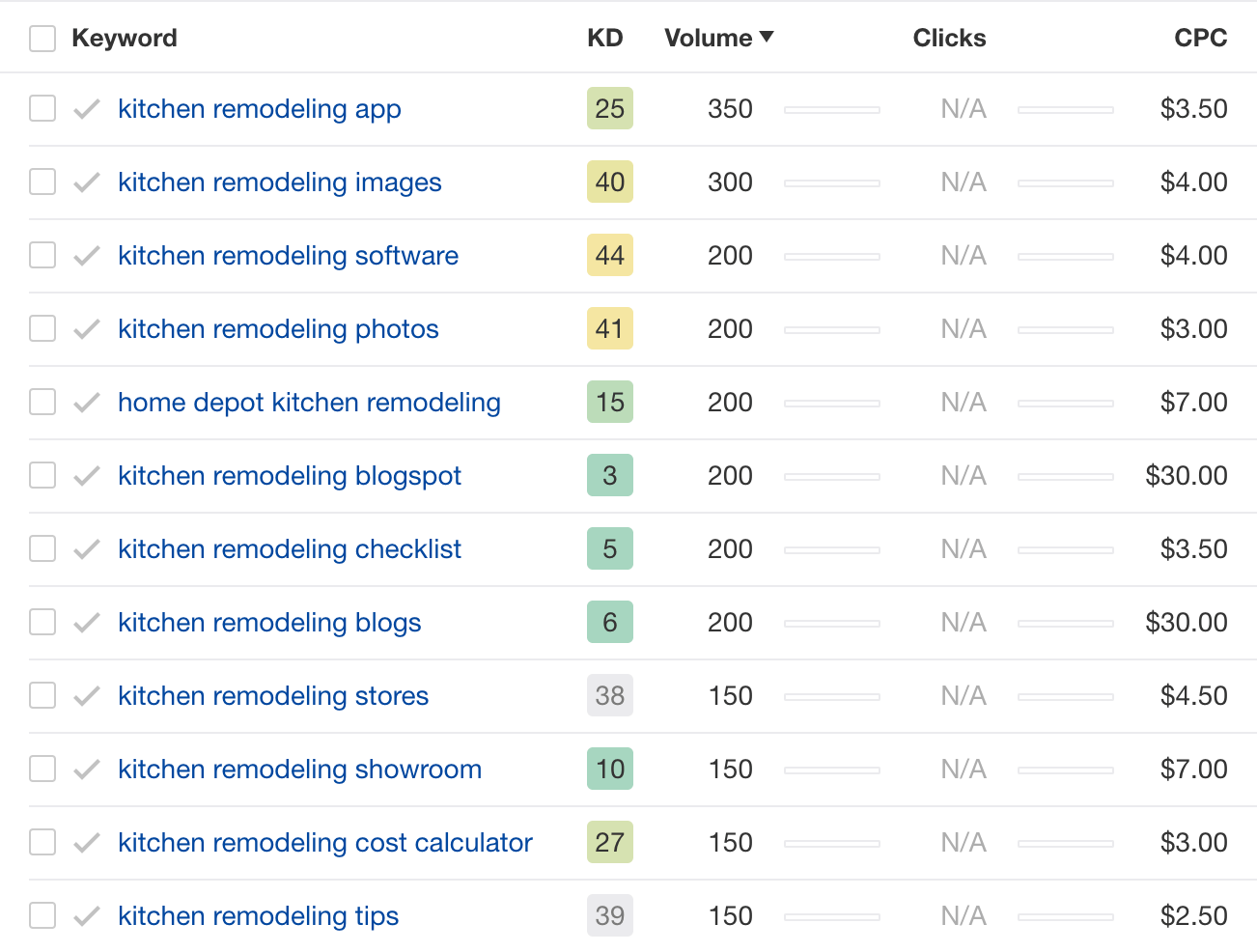How Much Does Google Ads Cost? (What Should You Really Be Spending?)
Are you looking to advertise on Google, but not sure how much you should be spending?
This is one of the most common questions we get, and today I’m going to break down some common misconceptions about ads cost and how much you should spend on advertising!
In this article, I’ll show you how to set clear goals, how you can mathematically calculate how much to spend, and what to focus o to get a positive ROI (Return On Investment).
Let’s get into it!
Set Clear Campaign Goals
Setting clear goals is crucial for growth, but the problem is the most goals aren’t specific enough.
We often hear goals like “I want more phone calls!” or “I want more leads!”
These goals aren’t specific enough to be able to make decisions.
Instead, we need to laser target a specific amount of leads or sales or you won’t have anything to measure against!
So how do you get more specific?
Let’s look at an example:
Joe is a contractor that offers various services from handyman repairs, to roofing, to drywall installation, and more. He wants to grow his business through PPC.
Here are a few questions to think about when setting your goals, and some examples of how Joe might think through these:
1) What is your most popular or profitable service?
This is usually a great place to start when thinking about what campaigns to run on a limited budget. You don’t want to run ads for everything in the beginning because you’ll spread yourself too thin.
Example: Joe’s business services lots of clients, but his real expertise is in kitchen remodeling. In fact, it’s also his most profitable service and he despises doing the other jobs because they are less profitable. Instead of trying to target everything, we can focus in on just kitchen remodeling.
2) Who is your best type of customer?
Most businesses are a few types of customers, some worth much more than others.
Example: For Joe, the best kitchen remodels are the luxury design kitchens because he knows that type of customer is less price-sensitive and they are just looking for the best. On top of that, he knows which area of town has high-end homes. This is not a young customer, nor super old, usually in the 35-55 range. Now we’re really honing in on who we want to attract.

3) What is your close rate?
If you get 10 phone calls, how many turn into an actual sale?
Joe knows that if he gets 10 phone calls and they are mostly qualified, 2-3 turn into a deal. So on average a 25% close rate.
4) How many customers can I handle per month?
You’re probably thinking “unlimited!” but think more realistically. How much time can you or your team dedicate to selling and fulfilling the products and services in a month?
Example: Joe and his team can realistically take on 2-4 kitchen remodels per month right now, and could scale up in the future if more leads are coming in.
5) How much is an average customer worth?
This is a big one to think about and makes it much easier to put your mind at ease. How much could you spend to acquire 1 customer and break even?
Example: An average kitchen remodel goes for $25,000 and Joe has pretty good profit margins, so a single good customer could be in the $10,000 profit range. If he spent $10,000 to acquire 1 customer he would break even.
6) How much is the average lifetime value of a customer?
This takes the last question a bit farther and asks, how much could you spend to break even on the lifetime spend of a customer (If you don’t have cash flow issues – this is the way to really think to win.)
Example: Joe knows that once he establishes a relationship, he can often be the “go-to” contractor for all the needs of his clients when they want to remodel other areas of their house, install a new roof, etc. On top of that, he gets lots of referrals from the good work he does, so 1 customer usually can turn into 2 or more over time. The lifetime value of a customer easily be double the initial project.
Thinking like this can really clarify what you’re looking for and get really specific with your goals.
Setting Your Goal
Now that we have all this information, Joe might say –
I know that if I get 20 leads, I can close on an average of 5 (25% close rate). I can only handle 4 remodels max per month, so I will be just slightly over capacity (which will be a great thing!).”
Now that we have specific goals were able to focus on a targeted ad spend and calculate ROI.
Focus On ROI and not the CPC
A common mistake is to think the goal is to get the most leads for the cheapest price possible.
Of course, we all want the best ROI possible, and you don’t want to overspend, but the goal is NOT to get the most leads at the lowest price.
(If you want that, just go to eBay and buy a thumb drive of 400,000 leads for $19.99 and let us know how that works out!)
We want to bring in the most qualified lead, someone ready to buy, so we usually have to pay a premium.
We’re focused on the “High Intent” keywords where we have a better chance of closing the lead that is looking for your profitable service.
Now instead of focusing on purely the number of leads, or the pure cost, we’re focused on the big picture.
To bring this full circle lets take our initial goals above work backward to find our target ad spend.
Taking A Mathematical Approach To Ad Spend
Figuring out how to achieve your goals is relatively simple when you are specific and run the math.
When advertising, most large companies are able to break even or lose money on the front end, but understand they make it up on the backend.
Now, this doesn’t have to be the case for your business as long as you have a proper plan in place, a great follow up system, and a USP (Unique Selling Proposition).
Let’s take a look at how much Joe the contractor would need to spend to get 20 new leads in the next 30 days.
Ad Budget By Conversion Goal
We can work backward, starting with the number of leads that we want and figure out how much it will cost to acquire those leads.
This will be a rough estimate and is usually beatable, especially with optimization, but this is a nice conservative way to ballpark your ad spend.
Here’s the formula you can use:
(Number of Leads x Avg CPC) / Conversion Rate = Est. Monthly Ad Spend
| Monthly Lead Goal | 20 |
| Avg CPC | $9 |
| Avg Landing Page Conversion Rate | 10% |
| Monthly Adwords Spend Necessary | $1800 |
So we need about $1,800 in ad spend to get on average 20 leads at an average CPL of ~$90.
These numbers can fluctuate when we run real campaigns, but this is a pretty accurate estimation of what it will cost to get an opt-in lead at the beginning of a campaign.
(We’ll talk about taking it to the next level with optimization later!)
Potential Revenue
Let’s look at the potential revenue from these leads based on the close rate and the average purchase price.
We can use the following formula to calculate estimated revenue:
(Leads x Close Rate) x Average Purchase Price = Revenue
(20 Leads x 25% Close Rate) x $25,000 = $125,000
ROAS
If you’d like to take it a step further and understand your ROAS (Return on Ad Spend), we can use the formula:
Revenue / Cost = ROAS
125,000 / $1800 = 6,944% ROAS
In this example, we essentially spent $1,800 to acquire $125,000 in revenue.
This is the power of clearly defining your goals and taking a holistic, strategic approach.
If you want to dive deeper into this, you can check out our free ROI calculator here.
Increasing Profitability With Optimization
We like to start with conservative estimates above and then optimize the campaigns based on the data that we see in real life.
This is also done by utilizing daily optimization strategies, doing intensive keyword research, and modeling what other competitors are bidding on.
There are lots of ways you can adjust campaign performance based on the data.
Here are a few strategies to implement to scale your campaigns:
Expanding Keyword Sets
Creating a proper campaign setup and including a mix of different high intent keywords your CPC can average out and normalize.
Sometimes we have seen a 10, 20, or even 30% drop in a CPC when strategically expanding to a variety of high intent keywords.
Example for Joe:
| Keyword | Avg CPC |
| kitchen remodeling ideas | $4 |
| remodeling kitchen | $6 |
| kitchen remodeling near me | $8 |
| kitchen and bathroom remodeling | $14 |
| kitchen remodeling cost | $9 |
| kitchen remodeling contractors | $12 |
| kitchen remodeling cost estimate | $4 |
| kitchen remodeling designing | $4.5 |
You can see in the table above the avg CPC ranges from $4-$14.
As real data and leads roll in, we can make decisions on what kinds of keywords to keep or cut based on conversion rates and qualitative data like lead quality.
Adding Negative Keywords
Negative Keywords in Google Ads are keywords that we explicitly exclude from bidding on.
These are any searches that we find in the search term report that are irrelevant to the business.
In the following screenshot, you can see examples of keywords that contain “kitchen remodeling” but are irrelevant to what we’re selling.

Here, we can explicitly eliminate people searching for these terms and not pay for any of these types of clicks.
Split-testing Ads
This allows us to test different headlines and descriptions in the ads to see which angles perform best.
This alone has driven the CPL (Cost Per Lead) down but it takes enough testing and data to perform a proper test.
Optimizing Demographics
After we see enough leads come in through the account, we’re able to start eliminating certain age ranges, incomes, genders, and even locations on where we see little or no conversions.
Landing Pages Tests
This is one of our biggest opportunities to drop our CPL and only comes after a campaign is running well and producing quality leads.
We have been testing and focusing on CRO best practices we have seen anywhere from 5-10%+ increase in conversions when testing offers, designs, and landing page elements.
Conclusion
Next time you’re planning your marketing budget or planning your next advertising campaign, remember these simple steps:
- Set Clear Goals
- Focus on ROI
- Take A Mathematical Approach To Ad Spend
- Optimize & Scale Your Campaigns
If you focus too much on getting the lowest CPC, you’ll likely miss out on achieving a successful campaign.
Once you have clear goals and look at the larger picture, you have many more levers to pull to obtain a positive ROI.
If you’d some help achieving your advertising goals, check out our PPC management service where we can work through all this with you!
